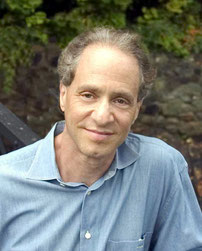
CHIEF SCIENTIST AT GOOGLE
RAY KURZWEIL is one of the world’s leading inventors, thinkers, and futurists, with a thirty-year track record of accurate predictions.
Called “the restless genius” by The Wall Street Journal and “the ultimate thinking machine” by Forbes magazine, Kurzweil was selected as one of the top entrepreneurs by Inc. magazine, which
described him as the “rightful heir to Thomas Edison.” PBS selected him as one of the “sixteen revolutionaries who made America.”
By Photo by Michael Lutch. - Photo by Michael Lutch. Courtesy of Kurzweil Technologies, Inc., CC BY 1.0, https://commons.wikimedia.org/w/index.php?curid=3324313
RAY KURZWEIL was the principal inventor of the first CCD flat-bed scanner, the first omni-font optical character recognition, the first
print-to-speech reading machine for the blind, the first text-to-speech synthesizer, the first music synthesizer capable of recreating the grand piano and other orchestral instruments, and the
first commercially marketed large-vocabulary speech recognition.
Among RAY KURZWEIL’s many honors, he recently received the 2015 Technical Grammy Award for outstanding achievements in the field of
music technology; he is the recipient of the National Medal of Technology, was inducted into the National Inventors Hall of Fame, holds twenty honorary Doctorates, and honors from three U.S.
presidents.
RAY KURZWEIL has written five national best-selling books, including New York Times bestsellers The Singularity Is Near (2005) and How
To Create A Mind (2012). He is a Director of Engineering at Google heading up a team developing machine intelligence and natural language understanding.
Speech Topics
The Acceleration of Technology in the 21st Century: the Impact on Business, the Economy, and Society :
At the onset of the 21st century, it will be an era in which the very nature of what it means to be human will be both enriched and challenged, as our species breaks
the shackles of its genetic legacy, and achieves inconceivable heights of intelligence, material progress, and longevity.
The paradigm shift rate is now doubling every decade, so the twenty-first century will see 20,000 years of progress at today’s rate. Computation, communication, biological technologies (for
example, DNA sequencing), brain scanning, knowledge of the human brain, and human knowledge in general are all accelerating at an even faster pace, generally doubling price-performance, capacity,
and bandwidth every year.
Three-dimensional molecular computing will provide the hardware for human-level "strong" AI well before 2030. The more important software insights will be gained in part from the
reverse-engineering of the human brain, a process well under way. While the social and philosophical ramifications of these changes will be profound, and the threats they pose considerable,
celebrated futurist RAY KURZWEIL presents an inspiring vision of our ultimate destiny in which we will merge with our machines, can
live forever, and are a billion times more intelligent...all within the next three to four decades.
Science, Technology, and Invention: Strategies to Create the Future
The democratization of innovation is a turbulent process with rapid creation, violent destruction, many winners and many losers. Despite the apparent chaos, we can discern predictable patterns.
The pace of innovation itself is doubling every decade. The overall price-performance and capacity of every form of information technology grows exponentially, generally doubling in a year or
less.
As information technology achieves each new level of price-performance and capacity, new applications become feasible and existing business models lose their viability. Another implication is
that the tools of disruptive change have been democratized. A couple of students created Google on their thousand dollar laptops. A few years later, a couple of undergraduates created Facebook
with tools that everyone has.
The rate of change is now so rapid that even three to five year business plans need to consider that every level of an industry will undergo major changes during that period. It’s not just the
devices we carry around that are influenced by these exponential changes. Health and medicine is now an information technology with the collection of the human genome, the means of changing genes
in a mature individual, and the ability to design interventions on computers and to test them on biological simulators.
Even energy will be transformed as we apply nanotechnology to the design of solar panels and energy storage devices. The means to change the world are in everyone’s hands.
The Acceleration of Technology in the 21st Century: the Impact on Healthcare and Medicine
We are now at a pivotal time in health technologies. With the collection of the genome in 2003 and the advent of techniques such as RNA interference that can actually turn off
the genes that promote disease and aging, medicine has transformed itself into an information technology. As such, medicine is now subject to the “law of accelerating returns,” meaning that these
technologies will be a thousand times more powerful than today in ten years, and a million times more powerful in 20 years.
Up until recently, health interventions were hit or miss. We'd find something that seemed to work with only crude models of how they worked. Drug development was called "drug discovery,"
basically finding things that worked rather than designing them.
Today it is within our grasp to slow the aging process and take full advantage of advances in bio- and nanotechnology that have already begun and will be occurring at an accelerating pace in the
years ahead. Ultimately, we will merge with our machines, vastly extending human health and longevity, and greatly increasing our intelligence.


